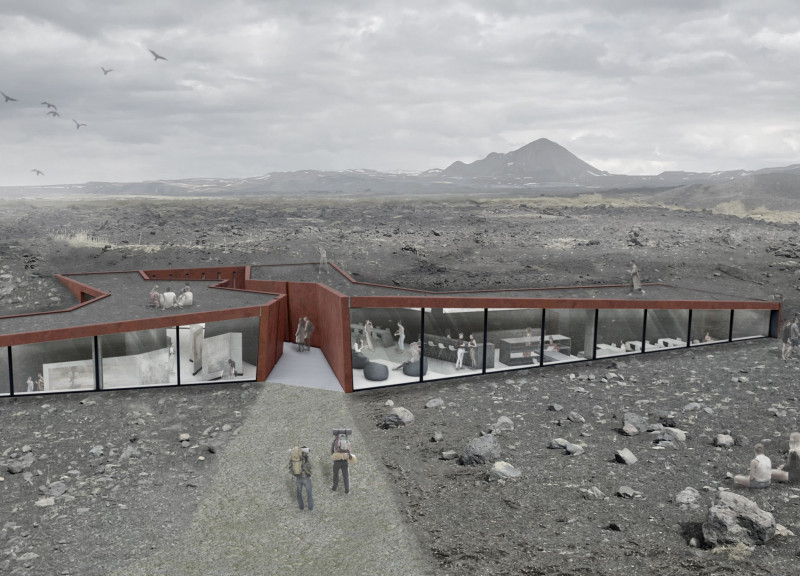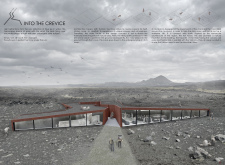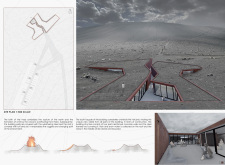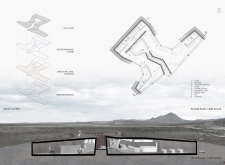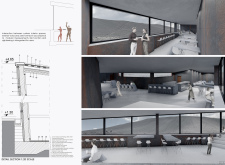5 key facts about this project
Site Integration and Materiality
One of the project’s unique aspects is its deep integration with the site. The building's form responds to the volcanic cracks and undulating topography, ensuring that it appears to emerge organically from the ground. The use of weathering steel on the exterior allows the structure to blend with the earthy colors of the landscape, while reinforced concrete provides the necessary stability against the region’s harsh weather. Tuff, a lightweight volcanic material, has been utilized in the roof, adding insulation and continuing the conversation with the surrounding geology. Large glass panels are strategically placed across the façade, facilitating natural light and panoramic views, further elevating the connection to the landscape.
Visitor Experience and Spatial Organization
The architectural design focuses on optimizing visitor experience through its spatial organization. The center is organized around a central courtyard, fostering social interaction and outdoor engagement without intruding on the site's natural beauty. The public spaces, including the café and exhibition areas, are arranged to maintain an unobstructed flow, allowing visitors to explore the features of the building and locate themselves within the striking landscape. The inclusion of ramps and terraces promotes accessibility while providing dynamic visual perspectives of the panoramic scenery. Each interior space is purposefully designed to enhance the appreciation of the site’s geological context, encouraging visitors to reflect on the environment during their journey through the center.
Sustainability and Environmental Considerations
"Into the Crevice" exemplifies sustainable architecture through its strategic design elements. By using locally sourced materials, the project minimizes its carbon footprint while ensuring durability and resilience against climatic challenges. Additionally, the architectural layout incorporates natural drainage solutions, which are crucial for managing the precipitation common in Iceland. The focus on harnessing light and incorporating outdoor spaces not only reduces reliance on artificial lighting but also emphasizes the natural beauty of the site, ultimately enriching the visitor experience and promoting environmental responsibility.
For a more comprehensive understanding of this architectural project, including architectural plans, architectural sections, and detailed architectural designs, please explore the project presentation for further insights.


